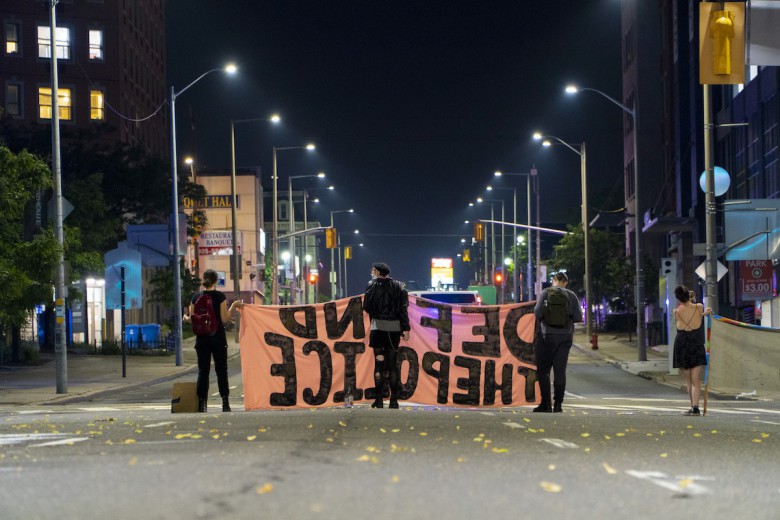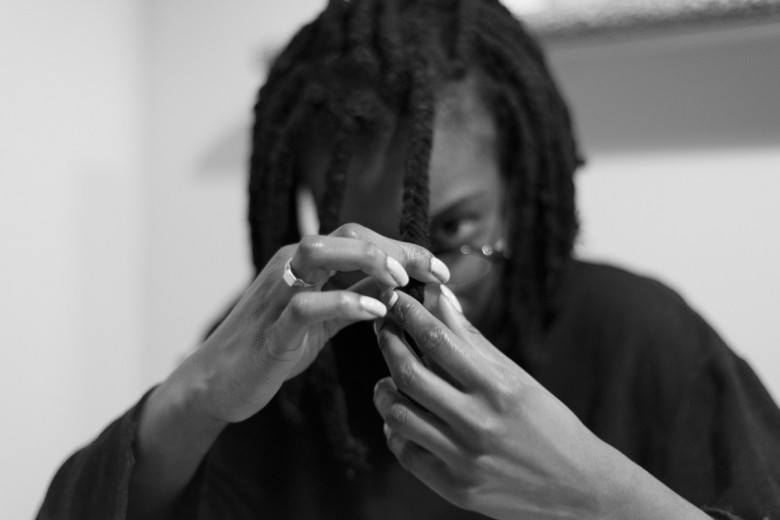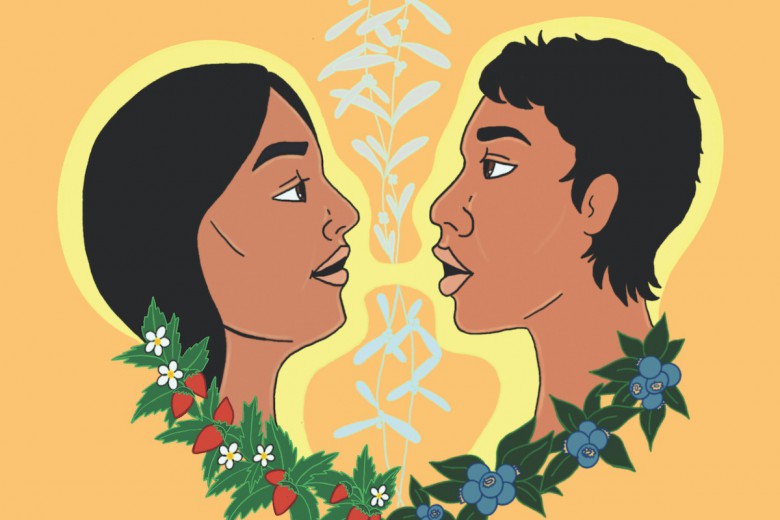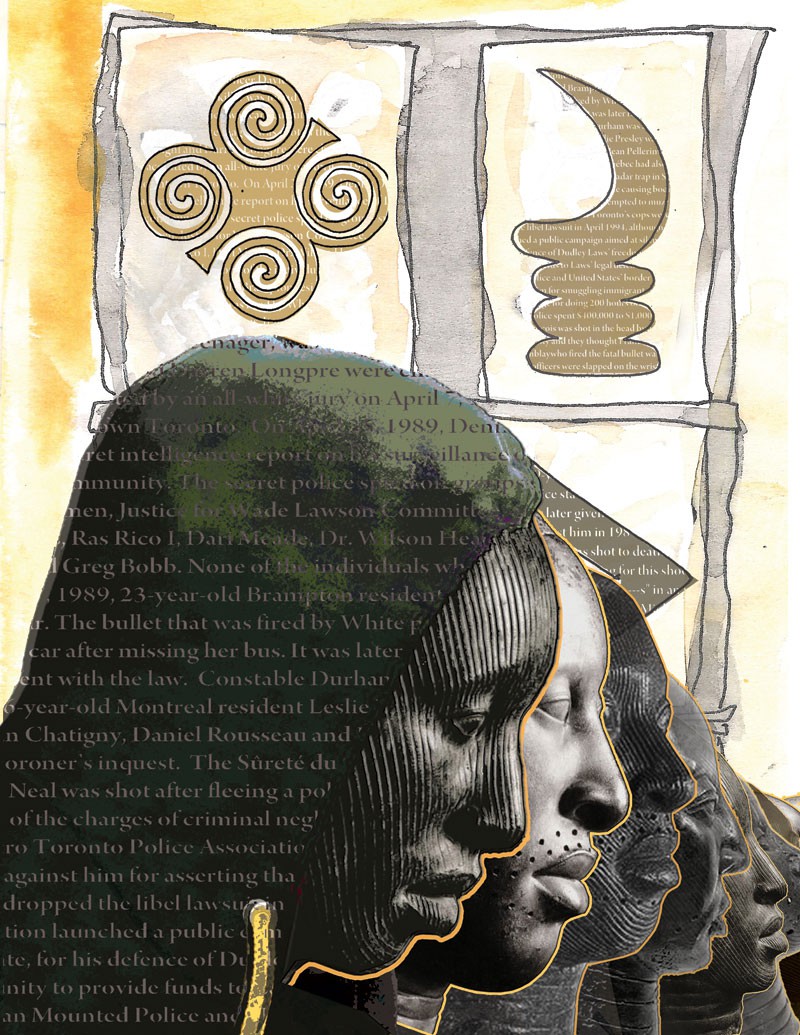
Sheriff John Brown always hated me,
For what, I don’t know:
Every time I plant a seed,
He said kill it before it grow –
He said kill them before they grow.
And so:
Read it in the news:
(I shot the sheriff.) Oh, Lord!
(But I swear it was in self-defence.)
— “I shot the sheriff” by Bob Marley
Bob Marley captures the anxiety and the desire of many Afrikan Canadians who are confronted with police violence as a basic part of their lived experience in Canada.
Scot Wortley, a criminologist at the University of Toronto, highlights a survey suggesting Afrikan Canadians from higher socio-economic backgrounds perceive greater discrimination from police than their working-class counterparts. However, irrespective of class difference, Wortley finds that 55 per cent of Afrikans in Toronto believe the police are more likely to use force against them than against their white counterparts. By contrast, only 26 per cent of whites believe police are more prone to use force against Afrikans. These different perceptions are rooted in experience.
In August 1988 Lester Donaldson was shot to death in his Toronto rooming house by a white police officer who was later acquitted of any wrongdoing. In 1999 Henry Musaka, armed with an unloaded pellet gun, was shot to death in a Toronto hospital. Since the decade spanned by these two killings the number of Afrikans killed or maimed by police in Toronto has gone down. But police violence and community containment have been expressed in other ways.
The Afrikan community has long believed it is the target of aggressive and targeted overpolicing. A landmark October 2002 series in the Toronto Star used police data to conclusively demonstrate that Afrikan Canadians in Toronto were subjected to racial profiling. A follow-up series by the Star in February 2010 confirmed that the profiling continues.
In the eyes of the Afrikan community, Marley’s Sheriff John Brown is symbolic of all police, or of Babylon in the language of the Rastafarians, for whom Marley is a chief icon. In the world view of the Rastafarians, and Afrikans in general, Babylon and the police are interchangeable terms for the most visible, oppressive, and racist presence of the criminal justice system.
In 2011, Afrikans comprised 2.5 per cent of Canada’s population but made up 9 per cent of its federal prisoners. Between 2001 and 2011, the number of Afrikans in Canadian prisons grew by 40 per cent, according to a report by the Office of the Correctional Investigator. The police are on the front line of the prison-industrial complex, and their racial profiling and overpolicing activities generate the bodies for the court and prison systems. “Every time I plant a seed” for liberation and dignity, the police “said kill it before it grow.”
The police are at hand to keep Afrikans in their place and to prevent or discourage overt resistance to their exploited condition. In 1989, the Toronto police carried out a surveillance program against 13 organizations and 18 individuals who participated in the campaign for police accountability measures. In 1994, a report exposed the RCMP’s secret monitoring of black power organizations, documenting the racist language and stereotypes used by the police in their descriptions of these groups and their non-violent activists.
People with critical views of society rightly claim that the police exist “to serve and protect” the economic, social, and political interests of socially dominant groups. Given the existence of institutional racism in Canada, it’s no surprise that the police play a role in maintaining the racial status quo.
Why “Afrikan”?
“Afrikan Canadians” refers to all people of Afrikan ancestry living in Canada. Afrikan Canadian and Afrikans are used as interchangeable terms in this article. I do not use the collective name “Black” or “Blacks” because it does not associate Afrikans to the land: Afrika.
Afrika or Afrikan is spelled with a “k” because most Afrikan languages follow this convention. It was the practice of the European colonialists to substitute “c” for “k” in words from various Afrikan languages. It was an act of linguistic and cultural imposition.
Afrikans are on the second-to-last rung of the racial hierarchy in Canada: based on social and economic indicators of well-being by race, Indigenous people are at the bottom. Given the higher rates of joblessness and the high dropout/push out rate in schools for Afrikan youth, some are forced into “lumpen” activities in the illicit drug economy. Afrikan people, especially men, are categorized and stereotyped as a menace to society, which is used as justification for punitive and antagonistic policing.
The blanket targeting of Afrikans by the police generates a higher rate of arrest and incarceration, which in turn reinforces the racist notion that they merit special law enforcement attention. It shouldn’t surprise anyone that the police force in Toronto has expanded its presence into Toronto’s schools, as is the practice in racialized urban schools in the United States. Racialized students, especially Afrikan Canadian ones, have borne the brunt of the militarization of our schools. The Safe Schools Act (also known as the Gang Recruitment Act) has generated high levels of suspension and expulsion in Ontario, channelling Afrikan bodies into the school-to-prison pipeline.
The police force operates like an army of occupation in the community. This hasn’t changed much since Afrikans’ increased presence in Toronto following the implementation of less racist and more objective reforms to Canada’s immigration system in 1967.
This said, there have been fewer shooting deaths and injuries by police bullets since 2000. Why is this so? As the ex-slave Frederick Douglass said, “power concedes nothing without a demand.” Positive changes are the result of the police accountability activism of the Afrikan community under the militant leadership of the Black Action Defense Committee and the late Dudley Laws.
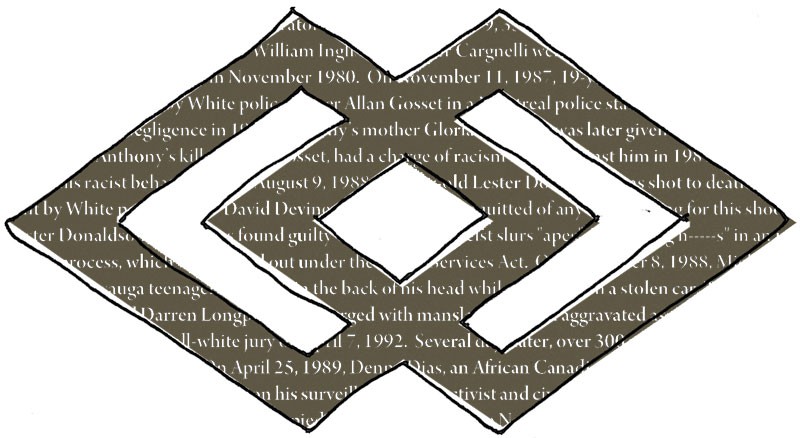
The racial hierarchy is captured in a simple rhyme: “If you’re white, you’re alright / If you’re brown, stick around / But if you’re Black, get back.” The 1992 Stephen Lewis Report on Race Relations that was issued in response to the May 4, 1992, Yonge Street uprising made it clear that all racialized groups were affected by the “indignities and wounds of systemic racism in Southern Ontario, [but] it is the Black community which is the focus.”
Afrikans are more likely to be killed or wounded, stopped, questioned or searched, and otherwise impacted by police violence than most of their racialized counterparts. In the popular imagination, fuelled by racially biased framing of street crime and images from films and music videos, Afrikans represent a threat to peace, order, and good government.
From the Buddy Evans killing by white police officer John Clark in August 1978 to the recent death in February 2012 of Michael Eligon, the Afrikan community has mobilized against police violence and containment. While Marley’s lyrics about Sheriff John Brown might resonate with some Afrikans, police accountability activism and organizing is the primary instrument used to fight police violence.
Such organizing has given rise to the establishment of the Special Investigations Unit, forced racial profiling onto the public radar, and advanced the necessity of civilian investigation of the police. Effective organizing saves lives and empowers our communities. The need continues for qualitative development in the strategy and tactics used to fight police violence in Toronto and across Canada.


